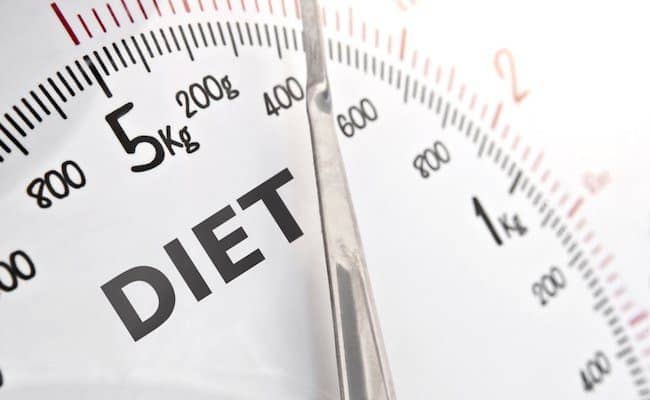
Unfortunately, hitting the gym hard a few days before a beach vacation won’t translate into getting a beach body. Seeing weight loss results from working out can take time. Depending on how much weight you have to lose, weight loss may be seen on the scales within a few weeks.
However, that may not translate into getting a six pack in a few weeks. Seeing muscle definition and fat loss may take more than 6 weeks which means it’s no quick fix.
However, any exercise, even if you don’t see results from your workout, can be beneficial for health.
Even if you start to see weight loss after a few weeks of working out and eating right, it’s important to stick with your positive habit changes past a few weeks.
Weight loss within the first few weeks can be mainly water weight loss. Exercising with healthy diet changes can promote fat loss instead of muscle loss.
However, exercising too much and not eating enough can zap muscles and could actually encourage your body to retain fat as a fuel.
Muscles grow when they are resting, not exercising. Therefore, it’s important to have a balance of working out, eating properly to fuel muscles and leaving time for muscle recovery.
If you are working out for specific health measures like to lower blood pressure, improve insulin sensitivity or improve blood cholesterol, aim to stick with your working out and healthy diet routine for at least 12 weeks.
For any positive impact on weight loss, muscle growth, fitness gains or other health parameters, it is important to pair working out with a healthy, balanced diet, adequate sleep and healthy stress relief.
There should be a proper balance of exercise and recovery to promote optimal muscle growth. Working with a sports dietitian or exercise specialist can help you tailor an individual plan for your needs.
How Long to Notice Weight loss?
According to a 2014 review (1), unless your exercise training is really high, exercise alone won’t cause significant weight loss.
Current exercise recommendations of 2.5 hours per week of moderate aerobic exercise or 75 minutes of vigorous exercise, and strength training major muscle groups 2 days a week are not recommendations for weight loss, they are for general health.
Therefore, if you are trying to lose weight, you will probably need to exercise more than this base line recommendation.
Weight loss can be obtained from following a fad diet, but weight regain usually happens right after stopping the fad diet.
Combining healthy, sustainable eating practices with an appropriate exercise routine can help support chronic weight loss over time. Most health experts suggest weight loss between 1-2 pounds per week.
The first few weeks of changing your diet and fitness routine may encourage more weight loss in the beginning. Sticking with your healthy lifestyle can encourage weight loss long term.
You probably won’t lose a significant amount of weight in a few weeks. It’s important to stick with your goals and not get discouraged. Slow, steady efforts can mean your weight loss will be sustainable.
How quick will your working out show off your muscles?
This can vary greatly. It can depend on how much body fat you have and what type of exercise routine you are doing. A 2004 study (2) had 25 sedentary men split into one of three groups for 6 weeks: cardiovascular exercise, strength exercise or a control group.
Men in the cardiovascular and strength groups exercised an average of 34 minutes 3 times a week. At the end of 6 weeks, both subjects and a test panel did not see significant changes in body composition or percent body fat.
This may not be surprising since the workouts were so little per week. However, this is a realistic outcome for someone trying to improve their appearance for working out 3 times per week for about 30 minutes.
According to this study, it may take more than 6 weeks to notice a change.
If you are working out more than the amount in this study, your chances of seeing a shift in muscle toning and fat loss are increased.
It’s impossible to say an exact time for when you may notice a change in body composition because there is much individual variance.
Give yourself at least 3-6 months to measure changes in body fat or muscle definition after starting a workout routine.
Balancing working out with recovery is key for improving muscle strength and growth.
When do you see improvements in fitness?
Although these bleak projections for seeing muscle toning right away might sound discouraging, there are small changes you can notice within a few weeks after starting to work out. This is the good news!
Your workouts will become easier, you may not get as winded as when you first started, you may be able to go faster or lift more weights, etc. Improvements in fitness may be the first thing you notice for seeing results after working out.
These small, but significant, changes show there are changes going in your body. Your muscles are changing in structure to increase their capacity, and your cardiovascular system is improving.
Even though this may not translate to drastic drop on the scale or a muscle defining 6 pack, these improvements mean positive shifts in health.
Health improvements
A 2014 study (3) examined the effect of increasing exercise (exercise 5 days a week for 40 minutes) and reducing sedentary time had on blood pressure, BMI and insulin improvement after 12 weeks.
Researchers found exercise lowered blood pressure, lowered BMI and decreased insulin area under the curve.
This study suggests changes in health improvements after starting to work out could happen in about 3 months. Other studies have shown that exercise can have a positive effect on lowering blood pressure, increasing HDL and positively impacting blood sugar regulation.
Working out longer than 3 months can provide other benefits.
A 2007 study (4) found after working out for 9 months, a group of previously sedentary adults had significant improvements in lowered cardiovascular disease risk and improved cardiovascular fitness.










